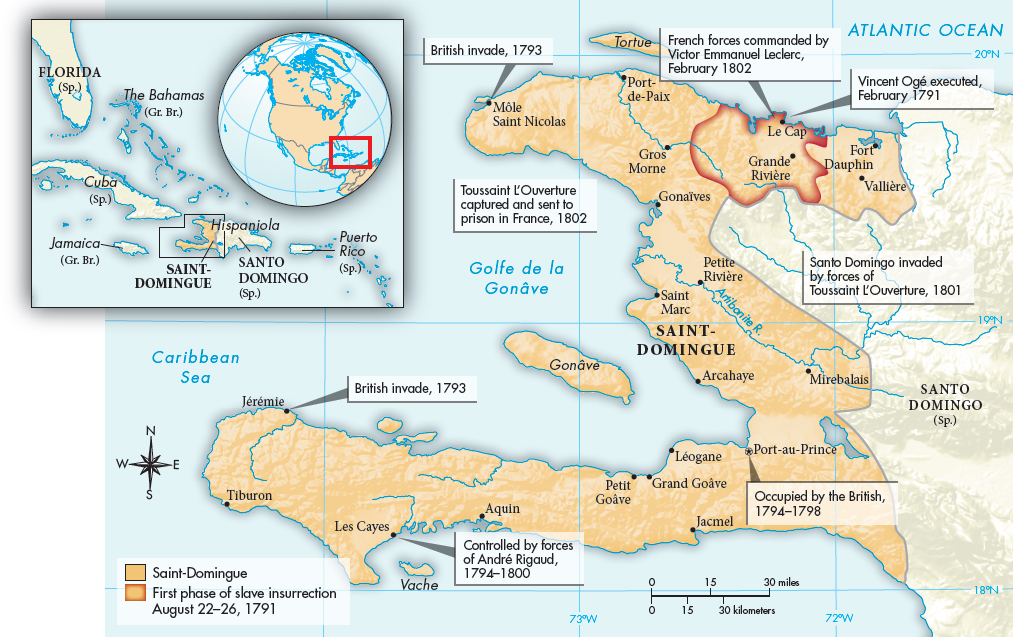The Outbreak of Revolt
In August 1791, slaves, who had witnessed the confrontation between whites and free people of color for over a year, took events into their own hands. Revolts began on a few plantations on the night of August 22. Within a few days, the uprising had swept much of the northern plain, creating a growing slave army. During the next month, enslaved combatants attacked and destroyed hundreds of sugar and coffee plantations.
On April 4, 1792, as war loomed with the European states, the National Assembly issued a decree extending full citizenship rights to free people of color, including the right to vote for men. The Assembly hoped this measure would win the loyalty of free people of color and their aid in defeating the slave rebellion.
Warfare in Europe soon spread to Saint-Domingue (Map 19.3). Since the beginning of the slave insurrection, the Spanish colony of Santo Domingo, just to the east of Saint-Domingue, had supported rebel slaves. In early 1793, the Spanish began to bring slave leaders and their soldiers into the Spanish army. Toussaint L’Ouverture (TOO-sahn LOO-vehr-toor) (1743–1803), a freed slave who had joined the revolt, was named a Spanish officer. In September, the British navy blockaded the colony, and invading British troops captured French territory on the island. For the Spanish and British, revolutionary chaos provided a tempting opportunity to capture a profitable colony.

MAP 19.3
The War of Haitian Independence, 1791–1804Neighbored by the Spanish colony of Santo Domingo, Saint-Domingue was the most profitable European colony in the Caribbean. In 1770, the French transferred the capital from Le Cap to Port-au-Prince. Slave revolts erupted in the north near Le Cap in 1791. Port-au-Prince became the capital of the newly independent Haiti in 1804.
Desperate for forces to oppose France’s enemies, commissioners sent by the newly elected National Convention promised to emancipate all those who fought for France. By October 1793, they had abolished slavery throughout the colony. On February 4, 1794, the Convention ratified the abolition of slavery and extended it to all French territories.
The tide of battle began to turn when Toussaint L’Ouverture switched sides, bringing his military and political skills, along with four thousand well-trained soldiers, to support the French war effort. By 1796, the French had regained control of the colony, and L’Ouverture had emerged as a key military leader. (See “Individuals in Society: Toussaint L’Ouverture.”) In May 1796, he was named commander of the western province of Saint-Domingue. The increasingly conservative nature of the French government during the Thermidorian reaction, however, threatened to undo the gains made by former slaves and free people of color.
